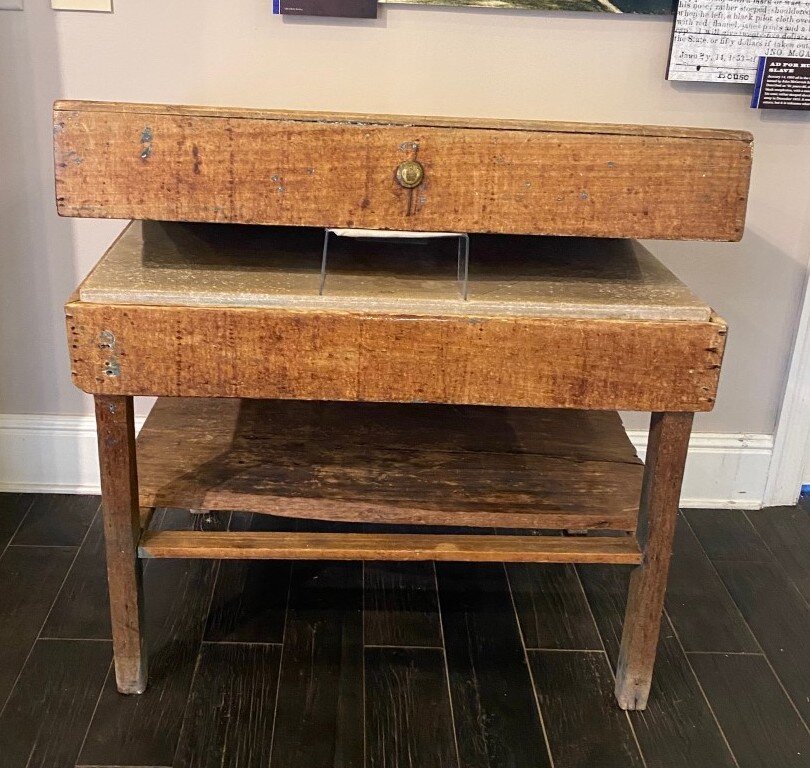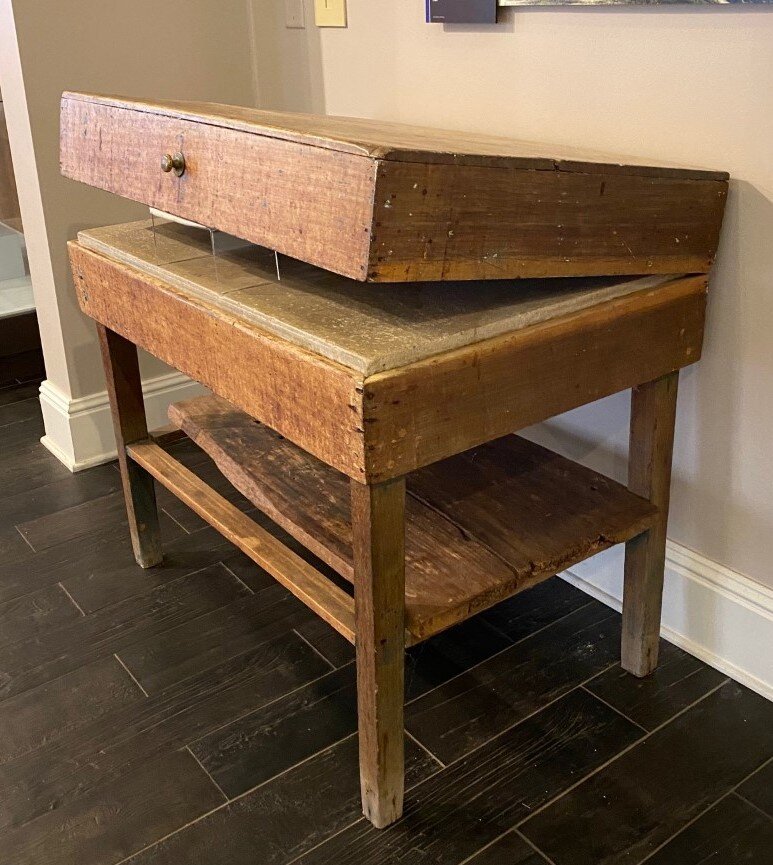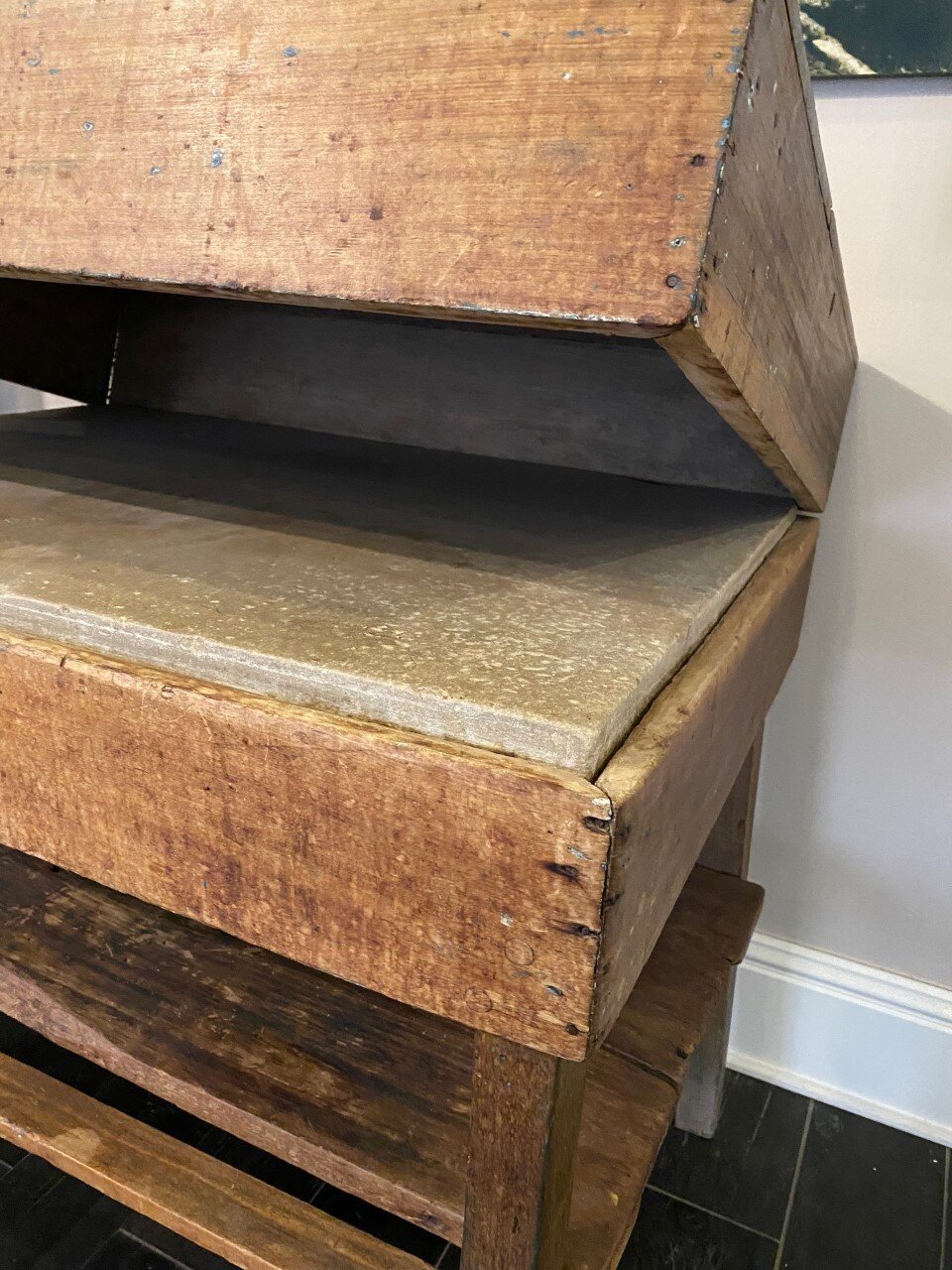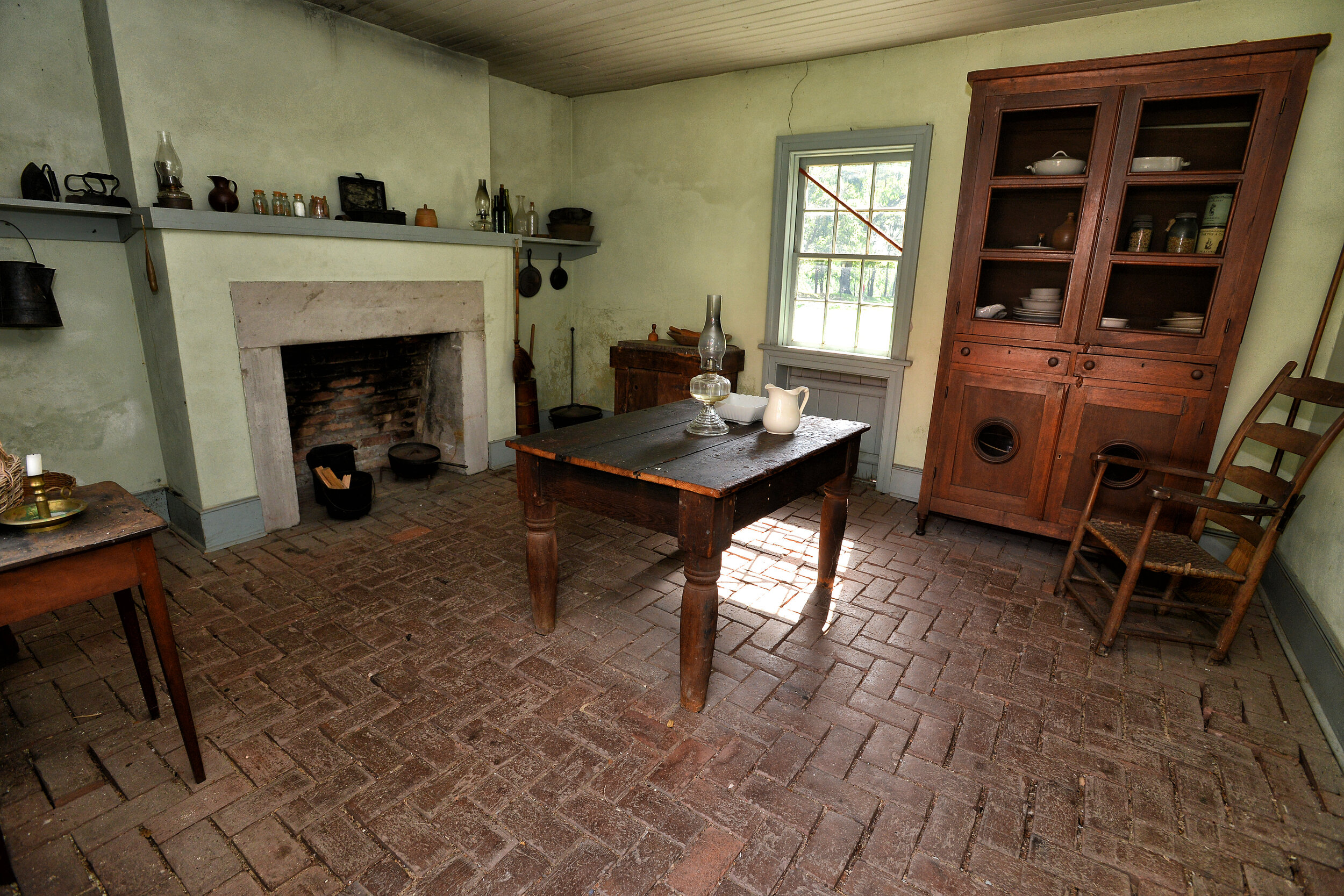Baking in the 1800s
Have you been baking bread in quarantine? I know I certainly have. Working from home and attempting to teach my children something worthwhile and trying to do things around the house has definitely led me to the kitchen. I do enjoy baking, but I never seem to have time. (Plenty of time at home now!) My baking efforts for the last several weeks have included all sorts of things, but I am most proud of my first ever Freeform bread loaf! I used an amazing no knead yeast recipe. It was so simple and so delicious. This is something very similar to what would have been made in the 19th century.
BISCUIT BOX
Kitchens in the 19th century, regardless of where they were located, were the hub of the house much like ours are today. They were full of tools and utensils to make life easier. One large tool you can see today, at both Carnton and the Carter House, is known as a biscuit box. The name of this devise is misleading because it is neither a box nor was used exclusively for making biscuits. Although, regional folklore tells us otherwise.
These simple tables with lids were often made by enslaved laborers in the South. The biscuit box was used by the cook of a home during the weekly chore of baking. The lid and support were often crafted from local wood and the tabletop was made of either limestone or marble. The biscuit box was a welcome invention for those who had to stand while they kneaded, beat, and cut dough for extended amounts of time. One of the most time consuming processes was making beaten biscuits. The dough could then be baked and eaten, or stored, depending on the season.
By the time of the Civil War, the early forms of furniture would have been useful for making breads, biscuits, pastries, crackers, cakes, and candy.
Questions:
Examine the photograph on the Carter House kitchen. What was their heat source for cooking and baking?
Based on your knowledge about life in the 1800s, in many Southern homes before the Civil War who did much of the cooking?
The Carter House kitchen was built away from the main house. Why do you think that is?
Why do you think the biscuit box has a lid?
Inventions to make cooking and baking easier have always been popular. Can you think of some of the most innovative kitchen inventions throughout the years and why are they significant?
Answers:
During the 19th century people used open flames for cooking or stoves. Stoves were gaining popularity in the 1800s, but they were not electric or gas like ours are now. Instead, they had either a wood fire or a coal fire inside. The stove allowed the heat to more uniformly cook and bake food than an open flame.
In many Southern homes, enslaved people did the cooking and baking. Not every household owned slaves and not everyone who owned slaves had them cook. But at homes like Carnton and Carter House, enslaved women worked in the kitchen.
One of the common myths is that kitchens were built separate from the main house because kitchen fires were common. People did not want their whole house burning down. Fires were more common in the 1800s then they are now (remember, they used open flames more than we do), but the main reason was the heat. Fires are hot. Having your kitchen fire outside your house kept the rest of your home cooler in the summer.
Often before bread, cake, biscuits, or anything else with yeast is baked, the yeast has to have time to rise. The lid would protect the dough while it is rising.
The stove was an extremely important invention when it comes to cooking and baking - especially when it becomes electric! Another great example is the microwave. The microwave was invented in 1946, but it wasn't until the 1990s that the vast majority of people in America had them in their homes. However, the list of kitchen inventions is endless. There is the refrigerator (which allowed people to preserve food in their kitchen), the blender, the dishwater. . . Almost all of the inventions help to save time and energy.
Vocabulary Words:
19th Century - The years between 1800 and 1899. Because years 0-99 were the 1st century, each group of 100 years is called for the number after it. Today we are living in the 2000s or the 21st century and the 1700s (when America was founded) are the 18th century. They both mean the same time period.
Folklore - Traditional beliefs and stories of a community passed down from one generation to the next.
Beaten Biscuits - Harder, denser biscuits that do not crumble. Often they were eaten with ham.






